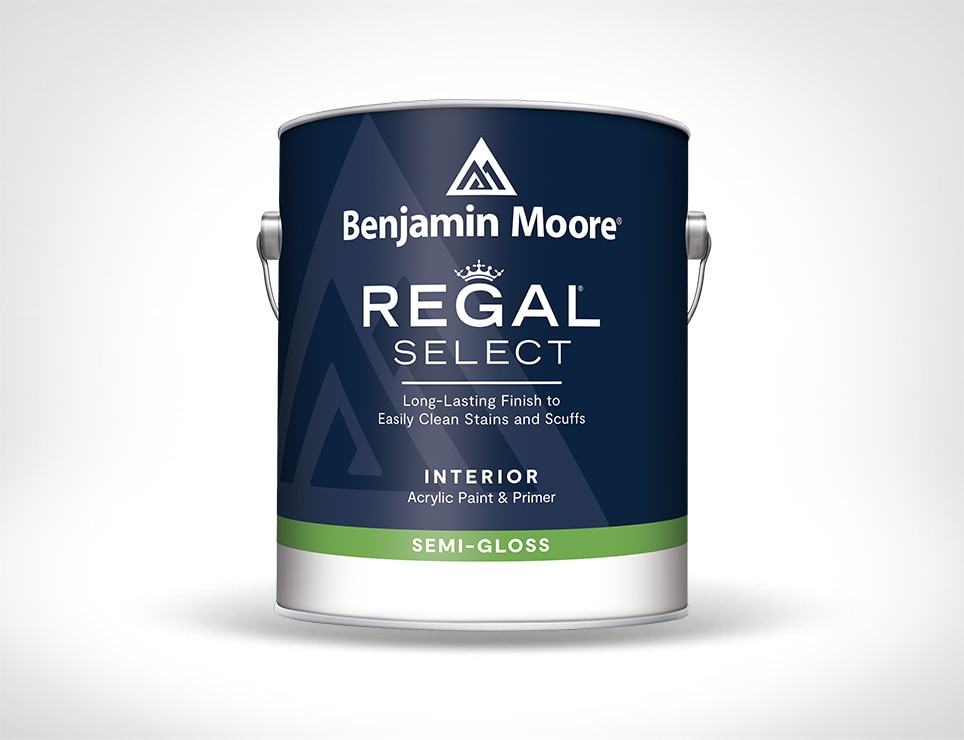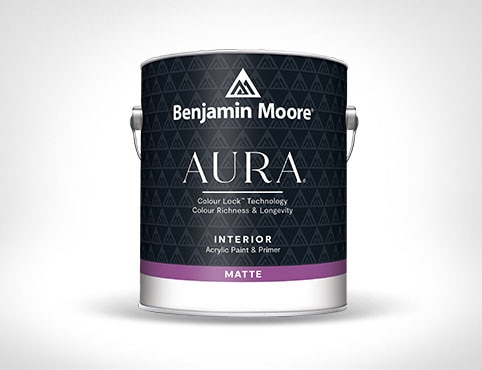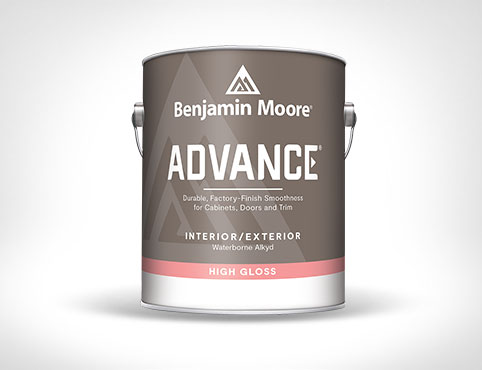How to Paint a Brick Fireplace
With premium products and the right attention to prep work, you can easily give any room with a brick fireplace a whole new look.
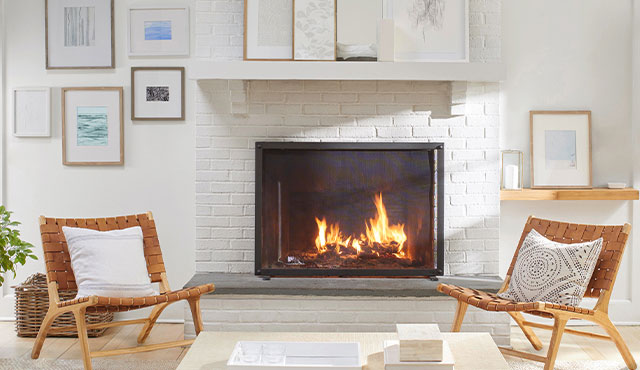
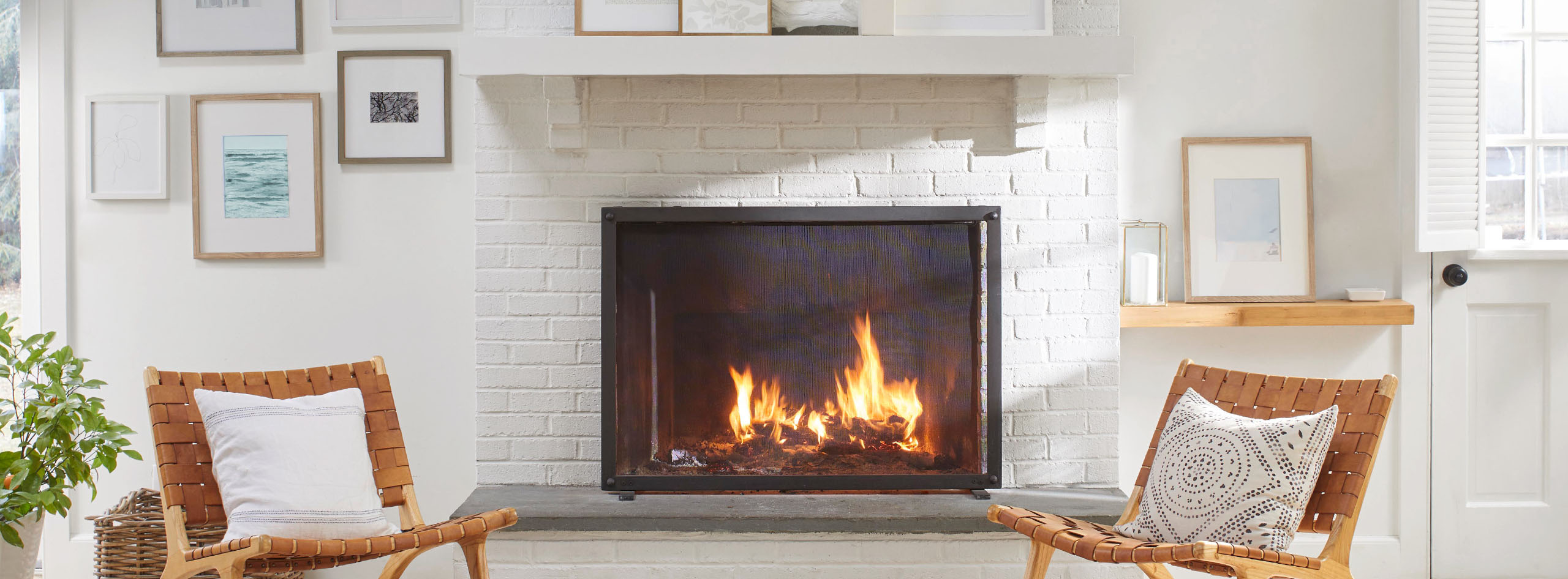
Whether you’re going for a modern look, or keeping things classic, painting a brick fireplace does not have to be difficult. Read on for our step-by-step guide, including how to clean your brick fireplace before painting to ensure the ultimate success.
Painting a Brick Fireplace
Updating an old brick fireplace with paint is a do-it-yourself project that delivers a big impact with relatively little effort. The key to getting the best results? Do the prep work properly before putting brush to brick.Learn how to paint brick fireplaces and walls in this how-to video.
Step 1: Brush Out Debris
All painting projects require a sound and clean surface, so start by thoroughly brushing your fireplace with a stiff wire brush. Pay special attention to the mortar lines between the bricks to remove any loose debris, then assess the mortar to make sure it doesn’t need any repairs before you begin painting. Once the brushing is done, carefully remove all dust from the surface and floor using a vacuum with a brush attachment.
Important
Safety Note
You should always use personal protective equipment (PPE) when working on any project to avoid breathing in dust or getting particles in your eyes.
Safety Note
Step 2: Clean the Brick Fireplace
Now that you’ve removed all loose debris, it’s time to give the brick a deep clean to remove any accumulated soot or other mineral residue that could leach through your new paint.Try an all-purpose cleaner or a solution of soap and water. Be sure to do a spot test first on a small side area to make sure the cleaner doesn’t cause discouloration.
Knowing how to clean a brick fireplace is essential before you start. To wash the front of the fireplace, thoroughly rub the cleaner into the entire brick surface with a sponge, then wipe it with a clean sponge and fresh water. If any soot or other residue remains, a degreaser or trisodium phosphate can be used for a deeper clean.
Key Watchout
Bricks are porous and absorb a lot of water, so allow them to dry for 24 hours before priming and painting.
Step 3: Prime the Brick
After you’ve taped off the edges of your fireplace and trim, use a paintbrush to prime all the mortar lines between the bricks. Be careful not to leave any spots unprimed. We recommend using a high-quality acrylic latex primer like Fresh Start® High-Hiding All-Purpose Primer or Insl-X® Aqua Lock®.
Once the mortar is primed, use the roller to prime the face of the brick fireplace (a 12.7 mm [1/2 in.] nap roller cover or 9.5 mm [3/8 in.] nap roller cover will give you the best coverage, depending on the texture of your brick). A second coat of primer may be necessary to prevent any remaining soot or mineral staining from leaching through, especially if you are using a light paint colour. Because brick is porous and absorbent, you will likely need more primer than you would for a similar size wall surface. For best results, let the primer dry overnight.
Helpful Tip
A roller extension pole makes it easier to reach the higher areas of a floor-to-ceiling fireplace.Step 4: Paint Your Brick Fireplace
Once the brick fireplace is primed and dry, you can begin painting. To make sure you don’t miss any spots, carefully paint all the mortar lines with a brush before using a roller to apply paint to the face of the bricks. If you have a floor-to-ceiling fireplace, use an extension pole to reach the higher areas. A second coat of paint is recommended to ensure a long-lasting, consistent finish.Step 5: Paint the Mantel and Trim
Here are some design tips for painting your mantel and trim:- If you have built-in bookcases or baseboards that are connected to the mantel around the brick fireplace, use the same colour for a consistent look.
- For a sleek, modern style, paint the mantel the same colour as the brick fireplace and wall. Consider hanging a bold piece of artwork over the fireplace or decorating the mantel with bright accents.
- An eye-catching colour creates a focal point in the room, and a fireplace provides just the right amount of surface area for a bold hue. Pull a colour from existing accents in the room. If the accents are relatively light in colour, choose a paint that is a shade (or a few shades) darker.
- A black or white mantel is a simple yet classic look. A black mantel frames the fireplace and anchors the room, providing stability. A white painted mantel has timeless appeal, giving you the flexibility to change your décor throughout the year.
Important
Safety Note
Paint only the outside of your brick fireplace, not the interior of the fire box. Areas that will be exposed to open flame require a specialized high-heat product.
Safety Note
Brick Fireplace Paint: Choosing a Colour & Sheen
Neutrals like white and gray are the most common colours for painting a brick fireplace, but this is a project where you can be creative. Bold and contrasting colours can turn your brick fireplace into a true focal point. Benjamin Moore offers more than 3,500 colours to choose from, so be sure to sample a few of your favourites to make sure your final pick best suits your project.The Best Paint for Brick Fireplaces
When starting your project, you need the best products for the job. Benjamin Moore is trusted for its collection of high-quality products such as Regal® Select, Aura® and Advance® Interior paints.Sheen, or finish, can also enhance the visual effect. A lower sheen such as matte or eggshell will keep the natural texture of the brick with fewer visible imperfections, whereas a higher sheen like semi-gloss will reflect more light and can make future cleaning easier.
If you’ll be painting the rest of your space after painting your brick fireplace, our guide on how to paint a room is a great place to start.
Frequently Asked Questions
Q. Is painting a brick fireplace a good idea?
A. Updating an old brick fireplace with fresh paint is a do-it-yourself project that delivers a big impact with relatively little effort.
If you properly prepare for the work ahead, painting a brick fireplace should be relatively easy, adding depth and character to your space without having to paint the entire room.
Q. What kind of paint do you use on a brick fireplace?
A. When it comes to the best paints for brick fireplaces, we suggest using a premium Benjamin Moore paint like Aura® Interior, Regal® Select Interior, or Advance® Interior for beautiful results that last.
Q. What is the best colour to paint a fireplace?
A. Neutrals like white and gray are the most common colours for painting a brick fireplace, but don’t be afraid to try a bolder hue like Hale Navy HC-154, Soot 2129-20 or Terra Mauve 105 for a more impactful look.
Q. How do you make a brick fireplace look modern?
A. For a sleek, modern look, paint the mantel the same colour as the brick fireplace and the wall. Take it a step further with bold artwork over the fireplace or brightly coloured accents on the mantel.
Q. How long does a painted brick fireplace last?
A. The length of time your paint lasts on your brick fireplace depends on several factors, including the prep work before application and the paint used.
Benjamin Moore’s premium paints are known to last. With its added durability and reliability, Regal® Select Interior is trusted by professionals and DIYers alike to withstand the scuffs, mars and burnishing from everyday wear and tear.

